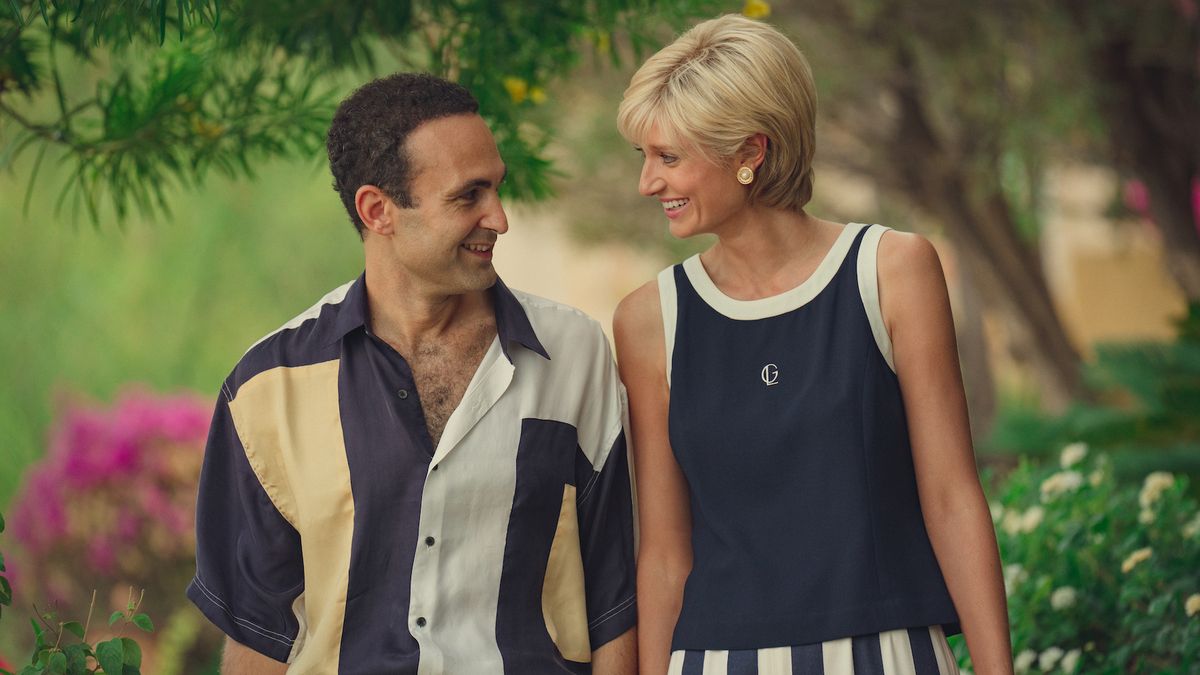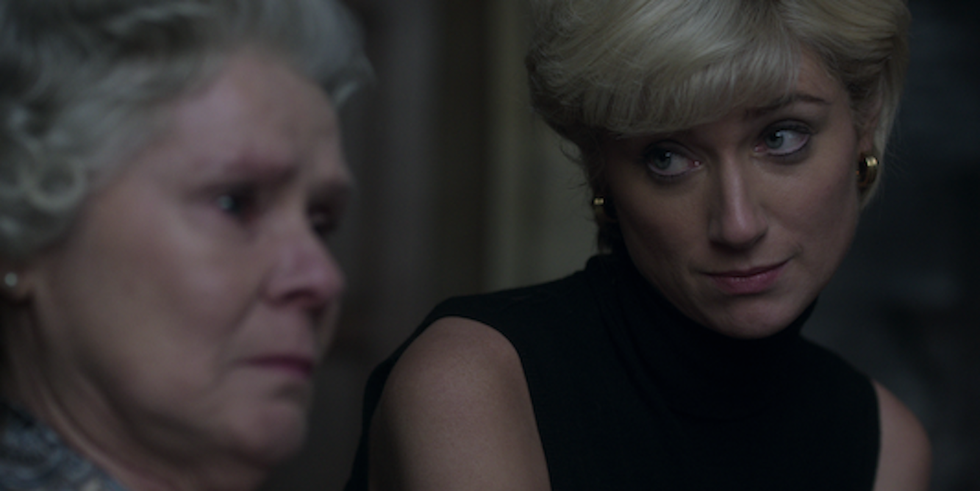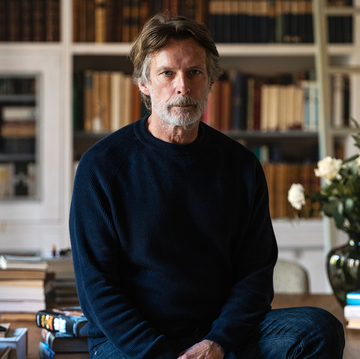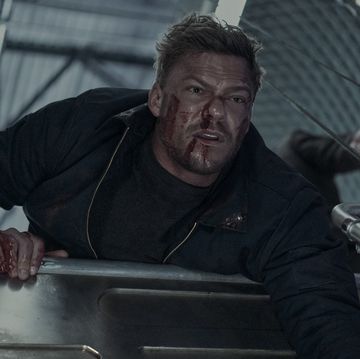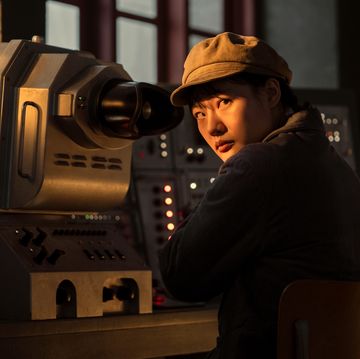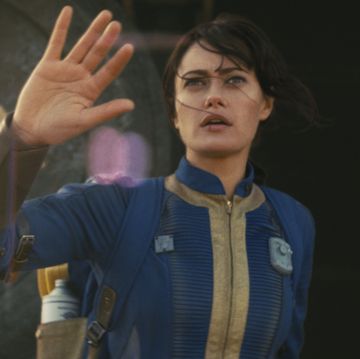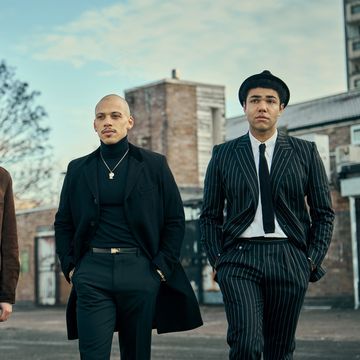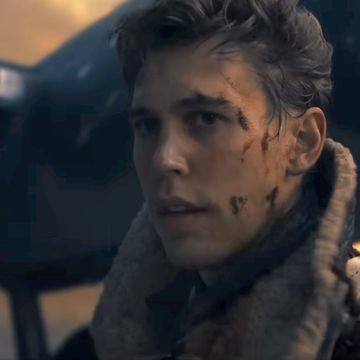Pop quiz: which former member of the royal family could this line possibly be about?
“I always say it’s hard to be half in anything, you’re either in or out.”
Many of us, anyone who has read a newspaper headline or dipped their toe into Twitter in the last five years, would safely assume we would be discussing Prince Harry and Meghan Markle, who announced their departure from the royal family in January 2020 and embarked on their transition from England’s celebrities to… America’s celebrities. In fact, it is a direct echo of Harry’s longing for a “half in, half out” approach to royal duties, expressed in Netflix documentary Harry & Meghan. But you would be wrong, for this is a line uttered by Queen Elizabeth barely five minutes into the first episode of the final season of Peter Morgan’s national lightning rod The Crown. Neat trick!
This season’s opening, “Persona Non Grata”, begins with a meeting at Chequers between Tony Blair (played by Bertie Carvel) and Diana (Elizabeth Debicki), in which the now-divorced princess asks the Prime Minister if she would be able to put her talents (which involve not being a, uh, robot) to good use even though she is no longer an HRH. Poor old Blair then has to traipse to Buckingham Palace to ask the Queen (Imelda Staunton) if Diana’s wishes can be fulfilled. The Queen, though, is adamant that the Princess of Wales cannot be a part-time royal, no matter how successfully she has campaigned against landmines. As the monarch notes, “Diana is now learning the difference between being officially in the royal family and out.”
One understands the temptation to make this joke. I am sure that many viewers, a good portion of whom will surely be monarchists, will chuckle. But the comparison between Diana’s wishes and the Sussexes’ arrives with a jarring thump. Apart from being a little mean-spirited – and making some unsavoury links between Diana’s fate and her youngest son and wife’s experiences – it does not make for good drama. Subtlety has never been the prized jewel of The Crown, but moments like this threaten to undo the whole series, which, yes, relies on our interest in the institution but also the people inside of it.
Unfortunately, this is a recurring feature of these first four episodes, all of which are written by Morgan. Though The Crown has long been obsessed by its central figure (the clue would be in the name), this season goes into overdrive, no doubt a consequence of the Queen’s death. Adulation on the late monarch comes thick and fast. In the second episode, “Two Photographs”, a royal photographer is presented in stark contrast to a meanie paparazzo. The former rhapsodises about the monarch’s ability to unite “a divided country through admiration for her”: “I think we’ll miss her terribly when she’s gone.” But the show also seems very aware of its own ending: its imposing final season split into two volumes, the proclamations about royalty more grandiose than ever. This is a show wrapped up not only its subject’s mythology but also its own.
Thankfully, Morgan realises that the ‘90s provided enough real-time drama to keep us entertained (the final six episodes, dropping mid-December, is set to zip us into the new millennium, focusing on the budding relationship of Prince William and Kate Middleton). These first episodes centre on the most telegenic royal, Diana, and her various romantic and professional pursuits, which mostly involve yachts and swimsuits and drinking and pop. She is often sad, but she is always sad in beautiful places. Debicki’s performance may not shed new light on the princess – is there anyone on this patch of Earth that has not dedicated a chunk of their brain to Diana’s story? – but she does bring to life the inner conflict of wanting to do good and still give into her petty side. It’s there that The Crown sings, shooting for the singular rather than the self-referential.
The first four episodes of The Crown Season 6 are available to watch on Netflix now
Henry Wong is a senior culture writer at Esquire, working across digital and print. He covers film, television, books, and art for the magazine, and also writes profiles.
